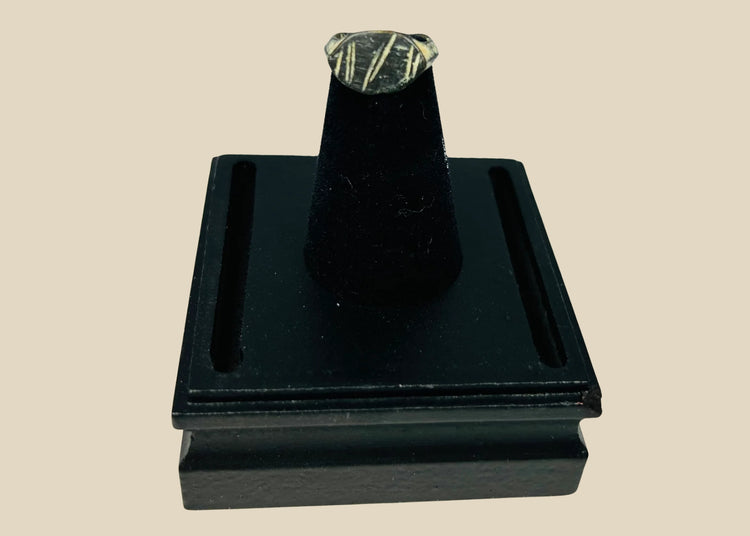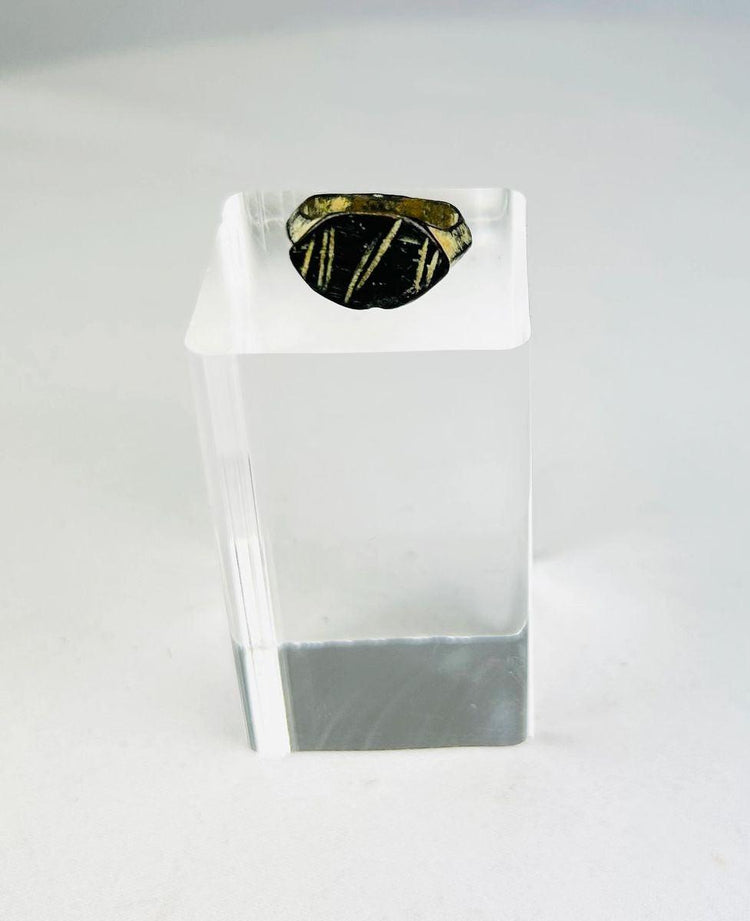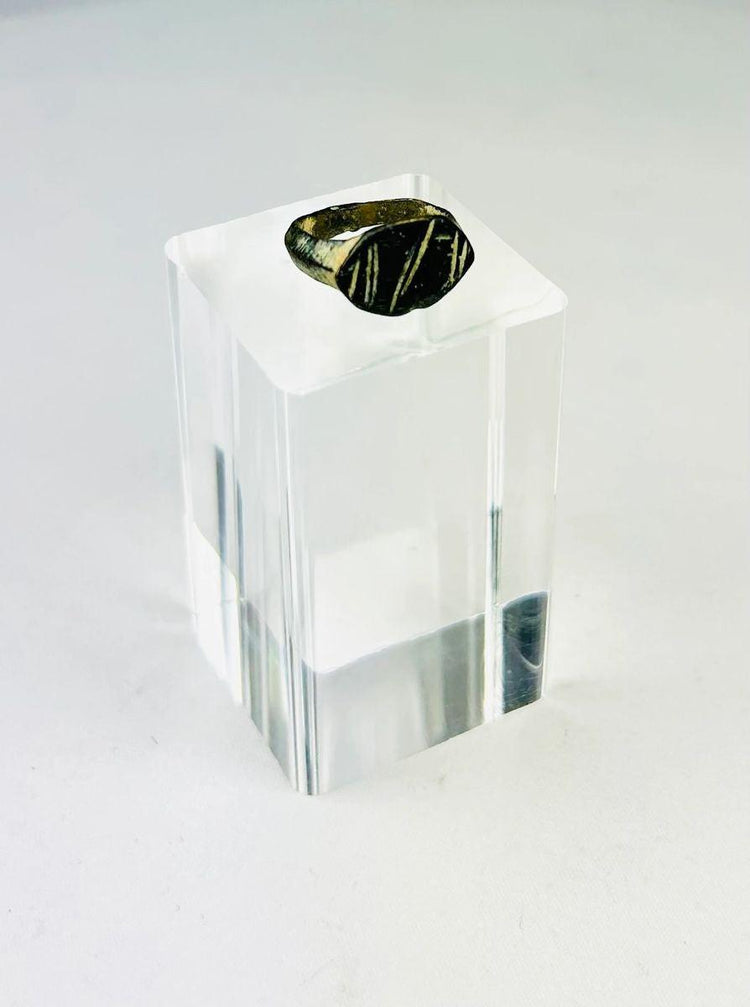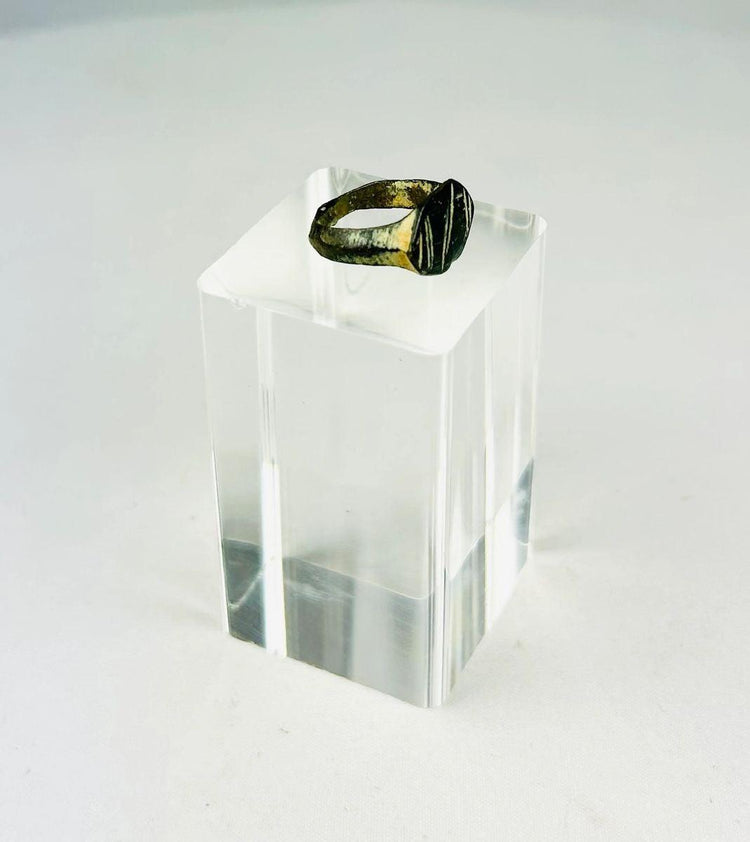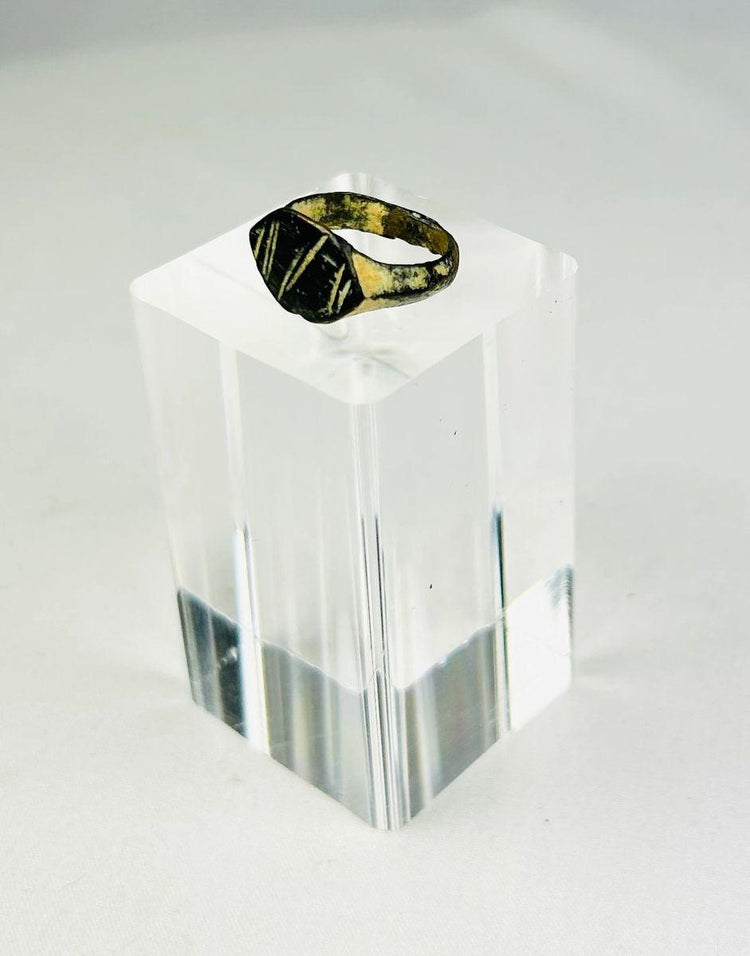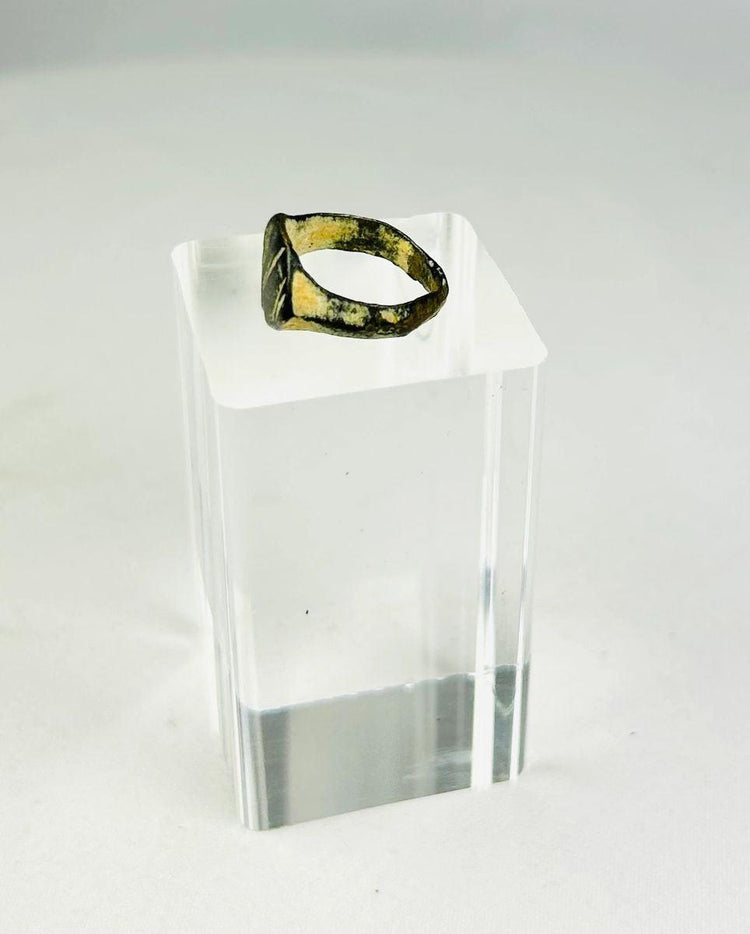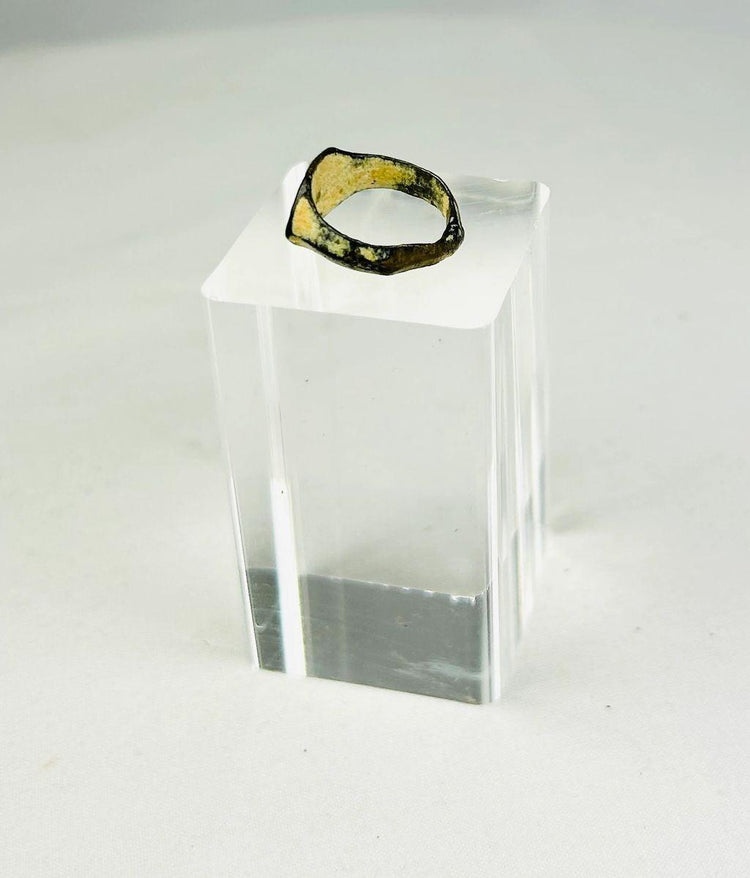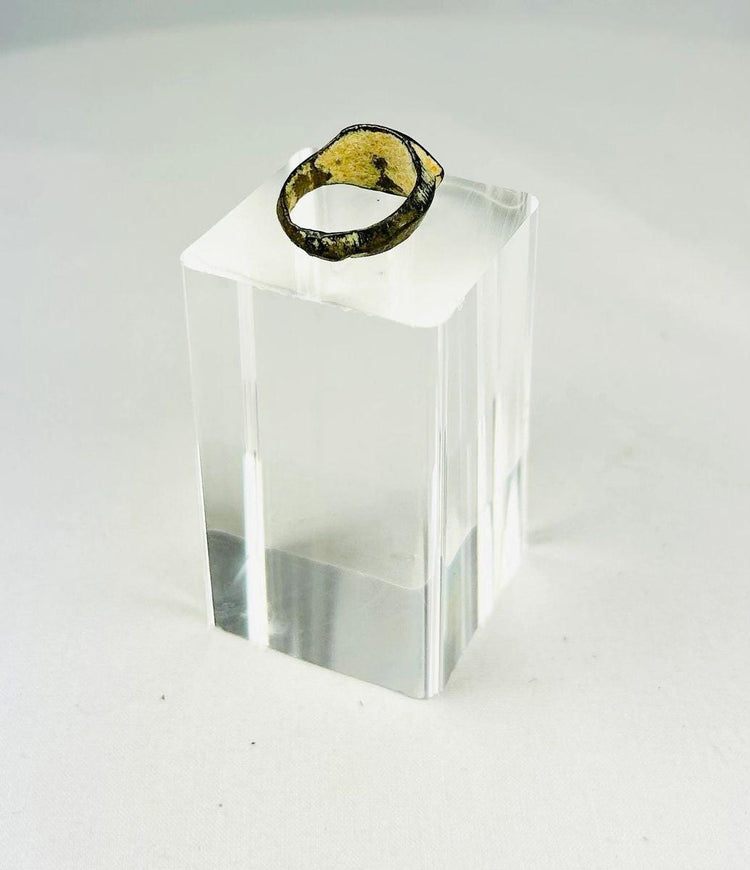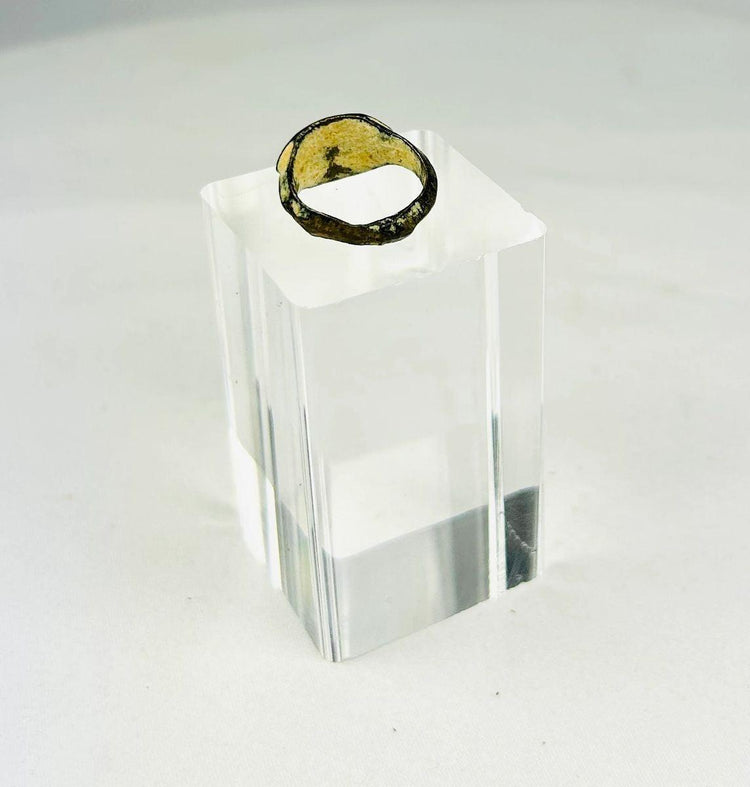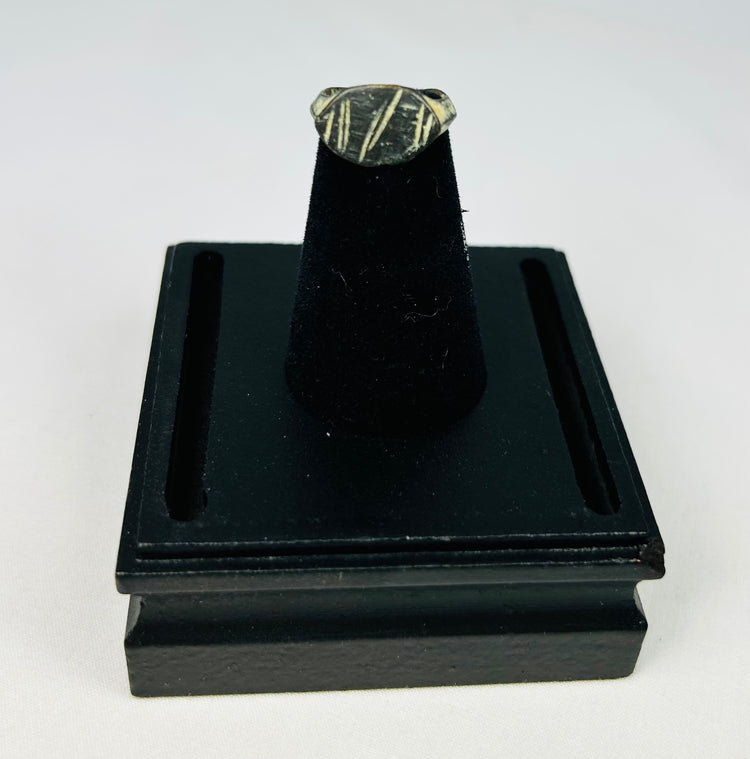Empire romain gravé | Bague en bronze | Sceau personnel | Vers le IIe siècle apr. J.-C.
Description
Plus
Moins
Contexte historique et origine
Région : Empire romain impérial
Matériau : Bronze
Période : Vers 100–300 apr. J.-C.
Description
Cette robuste chevalière en bronze de la Rome antique présente un chaton ovale en relief, gravé d'un motif linéaire en intaille de lignes diagonales entrecroisées. Ces motifs symbolisaient probablement l'identité familiale, l'appartenance professionnelle ou le rang personnel au sein de la société romaine. L'anneau carré, solidement moulé, témoigne à la fois de sa durabilité et de son esthétique. Une riche patine vert-noir, incrustée de minéraux, souligne ses siècles d'enfouissement, ajoutant profondeur et authenticité à sa présence.
Caractéristiques
- Lunette ovale surélevée avec motif en intaille linéaire incisé
- Construction en bronze coulé à la main avec bande à profil carré
- Patine funéraire naturelle avec dépôts minéraux
- Sceau fonctionnel, probablement utilisé pour sceller des documents et des marchandises
- Fort caractère archéologique et de préservation
Importance culturelle
Les chevalières étaient essentielles dans la vie quotidienne romaine, servant d'identifiants personnels et d'instruments juridiques. Le chaton gravé était généralement moulé dans de la cire ou de l'argile, constituant une signature unique à une époque où l'alphabétisation était limitée. Des bagues comme celle-ci étaient transmises de génération en génération, symbolisant statut, autorité et héritage personnel.
Condition
Excellent état de conservation.
- Intacte sans restauration moderne
- Patine de surface avec dépôts minéraux naturels
- La gravure en taille-douce reste bien définie
- Lissage des bords conforme au contexte d'usure et d'enfouissement
Dimensions (approximatives)
Taille de la bague : 2,75 US
Âge
Estimé entre 1 700 et 1 900 ans
Description
Contexte historique et origine
Région : Empire romain impérial
Matériau : Bronze
Période : Vers 100–300 apr. J.-C.
Description
Cette robuste chevalière en bronze de la Rome antique présente un chaton ovale en relief, gravé d'un motif linéaire en intaille de lignes diagonales entrecroisées. Ces motifs symbolisaient probablement l'identité familiale, l'appartenance professionnelle ou le rang personnel au sein de la société romaine. L'anneau carré, solidement moulé, témoigne à la fois de sa durabilité et de son esthétique. Une riche patine vert-noir, incrustée de minéraux, souligne ses siècles d'enfouissement, ajoutant profondeur et authenticité à sa présence.
Caractéristiques
- Lunette ovale surélevée avec motif en intaille linéaire incisé
- Construction en bronze coulé à la main avec bande à profil carré
- Patine funéraire naturelle avec dépôts minéraux
- Sceau fonctionnel, probablement utilisé pour sceller des documents et des marchandises
- Fort caractère archéologique et de préservation
Importance culturelle
Les chevalières étaient essentielles dans la vie quotidienne romaine, servant d'identifiants personnels et d'instruments juridiques. Le chaton gravé était généralement moulé dans de la cire ou de l'argile, constituant une signature unique à une époque où l'alphabétisation était limitée. Des bagues comme celle-ci étaient transmises de génération en génération, symbolisant statut, autorité et héritage personnel.
Condition
Excellent état de conservation.
- Intacte sans restauration moderne
- Patine de surface avec dépôts minéraux naturels
- La gravure en taille-douce reste bien définie
- Lissage des bords conforme au contexte d'usure et d'enfouissement
Dimensions (approximatives)
Taille de la bague : 2,75 US
Âge
Estimé entre 1 700 et 1 900 ans
Vous aimerez peut-être aussi


























